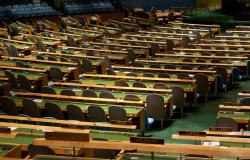
The UN General Assembly is the central forum of world politics. While it formally allows the member states to delegate up to five representatives, the size of the national delegations is generally larger and significantly increases over time. In this paper, I explore the size of the national delegations to the General Assembly from 1993 to 2016. Generally, the major powers (USA, Russia) send the biggest delegations. Surprisingly, China sends significantly smaller delegations than it used to before 2008. Big delegations are also sent by some small (Sweden, Finland, Norway, Switzerland) or developing countries (Nigeria, Bangladesh). My analysis shows that national capacities and issue-specific motivations drive up the delegation size. Although the issue-specific explanations are relatively rare in UN-related research (due to the general-purpose nature of the organisation), I argue that human rights, international security, economic development, and UN governance are the agendas for which states care about the General Assembly.
Policy implications
- Small delegations can hardly participate actively and effectively in the UN General Assembly (UNGA) sessions.
- The UNGA should relax the conditions of the travel entitlements to cover more than five delegates and to support small island states, not just the least developed countries.
- The UN Secretariat and the UNGA Presidency should organize the sessions less time-consuming and staff-demanding to help the smaller delegations act more actively and effectively. The number and agenda of the committees and working groups should be reconsidered.
- The UNGA rules of procedure should cap the number of delegates per country to reduce the disparities between the states.
Image Pablo BM via Flickr (CC BY 2.0)